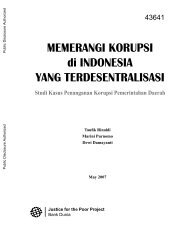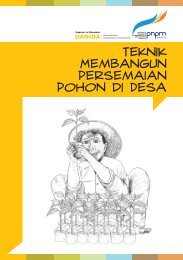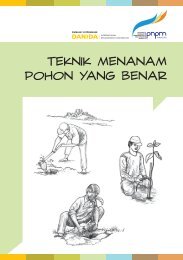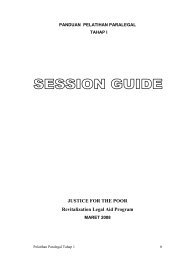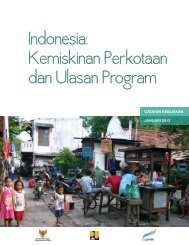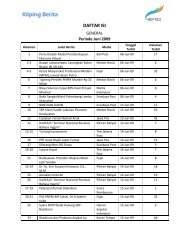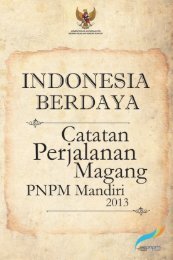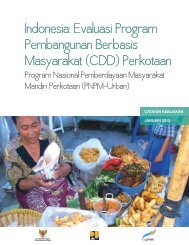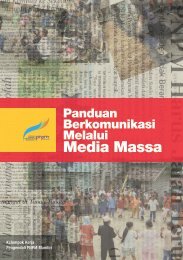PODES Infrastructure Census 2011 Report on ... - psflibrary.org
PODES Infrastructure Census 2011 Report on ... - psflibrary.org
PODES Infrastructure Census 2011 Report on ... - psflibrary.org
You also want an ePaper? Increase the reach of your titles
YUMPU automatically turns print PDFs into web optimized ePapers that Google loves.
III. Health <str<strong>on</strong>g>Infrastructure</str<strong>on</strong>g>III.1. Selecti<strong>on</strong> of Supply Readiness IndicatorsThe <str<strong>on</strong>g>PODES</str<strong>on</strong>g> Core and the <str<strong>on</strong>g>Infrastructure</str<strong>on</strong>g> <str<strong>on</strong>g>Census</str<strong>on</strong>g> allow for categorizing the available informati<strong>on</strong>al<strong>on</strong>g four main dimensi<strong>on</strong>s. We derive a total of seven indicators in order to reflect the variousaspects of health care supply. In what follows, the choice of the different indicators is motivated. Physical Availability and AccessibilityThe three types of indicators at hand (number of facilities per capita (“populati<strong>on</strong>-based”),distance-based, access-based) provide different pictures of the availability of health facilities. Thepopulati<strong>on</strong>-based indicators tend to be lower in densely populated areas and higher in sparselypopulated areas, and hence do not necessarily reflect actual availability of services. Thecorrelati<strong>on</strong>s of these indicators with other indicators of infrastructure readiness are usually low oreven negative, which is largely driven by the substantial impact of the populati<strong>on</strong> denominator <strong>on</strong>the indicator. As this would lead to a biased mapping of available infrastructure, no populati<strong>on</strong>basedindicators are included neither for the health nor for the educati<strong>on</strong> sector. However, we doaccount for populati<strong>on</strong> density when assessing the magnitude of existing infrastructure gaps.A more reliable measure of health care accessibility is the “distance to the next facility” indicator.However, these indicators show a relatively high number of missing values (no informati<strong>on</strong> for upto 1,000 sub-districts). Therefore, a “ease of reaching” indicator is c<strong>on</strong>structed, which is based <strong>on</strong>the assessment of the village head <strong>on</strong> how easy a certain health facility can be reached from thevillage. 7 The “ease of reaching” dummy at village level equals 1 if a facility is a) found within thevillage or b) “very easy” or “easy” to reach (according to the village head/the core resp<strong>on</strong>dent).Measuring the share of the sub-district populati<strong>on</strong> that can easily reach a certain facility, theseindicators indirectly account for distance and transport infrastructure. The correlati<strong>on</strong> with thedistance-based indicators is generally high, around 0.60, which c<strong>on</strong>firms the reliability of this classof indicators.We group the nine facility types into three indicators in order to capture different functi<strong>on</strong>s of thehealth care system: Access to Primary Care: share of the populati<strong>on</strong> that can easily reach a polyclinic,Puskesmas, Puskesmas Pembantu, or physician’s practice. Access to Sec<strong>on</strong>dary Care: share of the populati<strong>on</strong> that can easily reach a hospital Access to Delivery Facilities: share of the populati<strong>on</strong> that can easily reach a hospital,maternity hospital, Puskesmas, Polindes or midwife’s practice.7 For all nine health facility types, the village head/resp<strong>on</strong>dent of the <str<strong>on</strong>g>PODES</str<strong>on</strong>g> core reports <strong>on</strong> whether it is“very easy”, “easy”, “difficult”, or “very difficult” to reach the next facility(if no such facility is availablein the village).9




